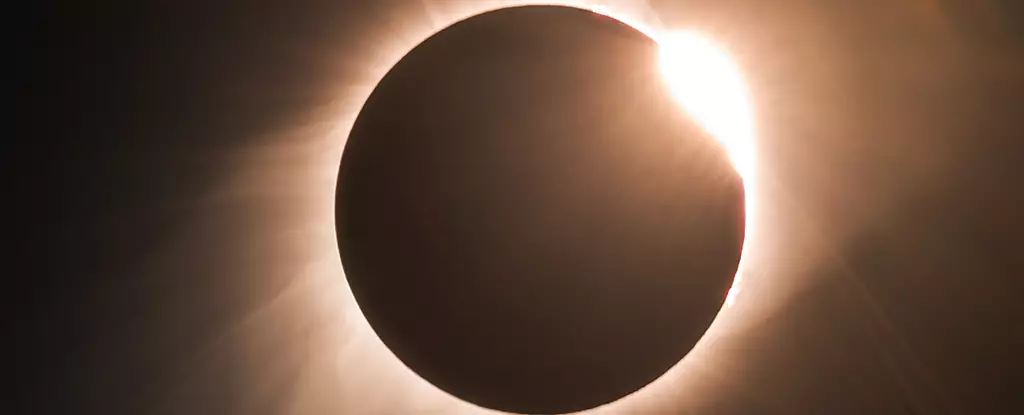The year 2024 promises to be an exceptional one for astronomy enthusiasts as millions of people eagerly await the opportunity to witness a spectacular solar event – a total solar eclipse. On April 8th, at approximately 1 pm CT, individuals across the United States will have the chance to put on their protective glasses and experience a mesmerizing sight. This upcoming eclipse holds particular significance as it follows closely on the heels of the memorable 2017 eclipse. The anticipation and excitement surrounding this celestial event are unprecedented.
While solar eclipses are not entirely rare, several factors set this forthcoming eclipse apart from its predecessors. First and foremost, the eclipse’s path across the US is remarkable, stretching from Mexico to northeastern Canada. This expansive route ensures that an astonishing 31.5 million people will be able to witness this extraordinary event just by stepping outside their homes. Major cities such as Dallas, Cleveland, and Indianapolis find themselves conveniently positioned for optimal eclipse viewing. Therefore, individuals residing in these areas will have the privilege of witnessing the spectacle firsthand.
During this solar eclipse, individuals’ patience will be rewarded with a few minutes of totality – the awe-inspiring moment when the Moon seemingly obscures the entire Sun. Depending on one’s location, this magical experience will last between three to four minutes, slightly longer than the 2017 eclipse. Scientists and enthusiasts alike eagerly await this moment, as it presents an opportunity to witness a unique celestial phenomenon.
An additional element that raises the stakes for this upcoming eclipse lies in the Sun’s current solar maximum phase, characterized by heightened solar activity. As the Sun approaches this phase, it unleashes solar flares and, ideally, scientists hope to witness a coronal mass ejection (CME) during the eclipse. CMEs are fast-moving eruptions of plasma from the Sun’s outer layer, known as the corona. The sight of an inky mass dramatically departing the Sun would be an extraordinary occurrence. If a CME does materialize, experts predict that the Earth may experience an uptick in aurora borealis activity a few days later. Even in the absence of a CME, the images captured during the eclipse are expected to be visually captivating, displaying intricate wisps and prominences radiating from the Sun’s surface.
Solar eclipses have long captivated the scientific community due to the opportunities they present for invaluable experimentation. They allow researchers to conduct experiments and collect data impossible to obtain under ordinary circumstances. The 1919 eclipse, for example, played a pivotal role in affirming Albert Einstein’s theory of relativity. Numerous institutions, including NASA, are eager to take advantage of this rare event. Scientists will employ a range of instruments including radar, balloons, spacecraft, and jets to conduct experiments and gather essential data. NASA’s focus lies in monitoring density, wind speed, and temperatures within the ionosphere, part of the Earth’s upper atmosphere. Unlike the 2017 eclipse, present-day technology affords researchers the unique advantage of simultaneously observing the Sun from two separate space observatories. This exclusive opportunity promises to provide scientists with an unprecedented level of comprehensive eclipse data.
The 2024 eclipse also marks an invigorating time for citizen scientists. NASA enthusiastically encourages individuals to actively participate in various projects. Amateur astronomers armed with ham radios, telescopes, cameras, and even smartphones are urged to document and record significant aspects of this captivating event. Citizens’ invaluable contributions ensure that a wealth of images, sounds, and observations will be available for further study and analysis.
It is undeniable that the 2024 solar eclipse promises to be an extraordinary and once-in-a-lifetime event. As millions of individuals eagerly anticipate the opportunity to witness this celestial spectacle, scientists and astronomy enthusiasts alike are fascinated by its unique characteristics. From its widespread path across the US to the potential for solar eruptions, this eclipse sets itself apart from previous ones in numerous ways. Furthermore, the scientific community recognizes the scientific and educational value of this event, utilizing cutting-edge technology and encouraging active participation from citizen scientists. Therefore, as April 8th, 2024 approaches, the nation finds itself united in anticipation of this remarkable astronomical event.


Leave a Reply